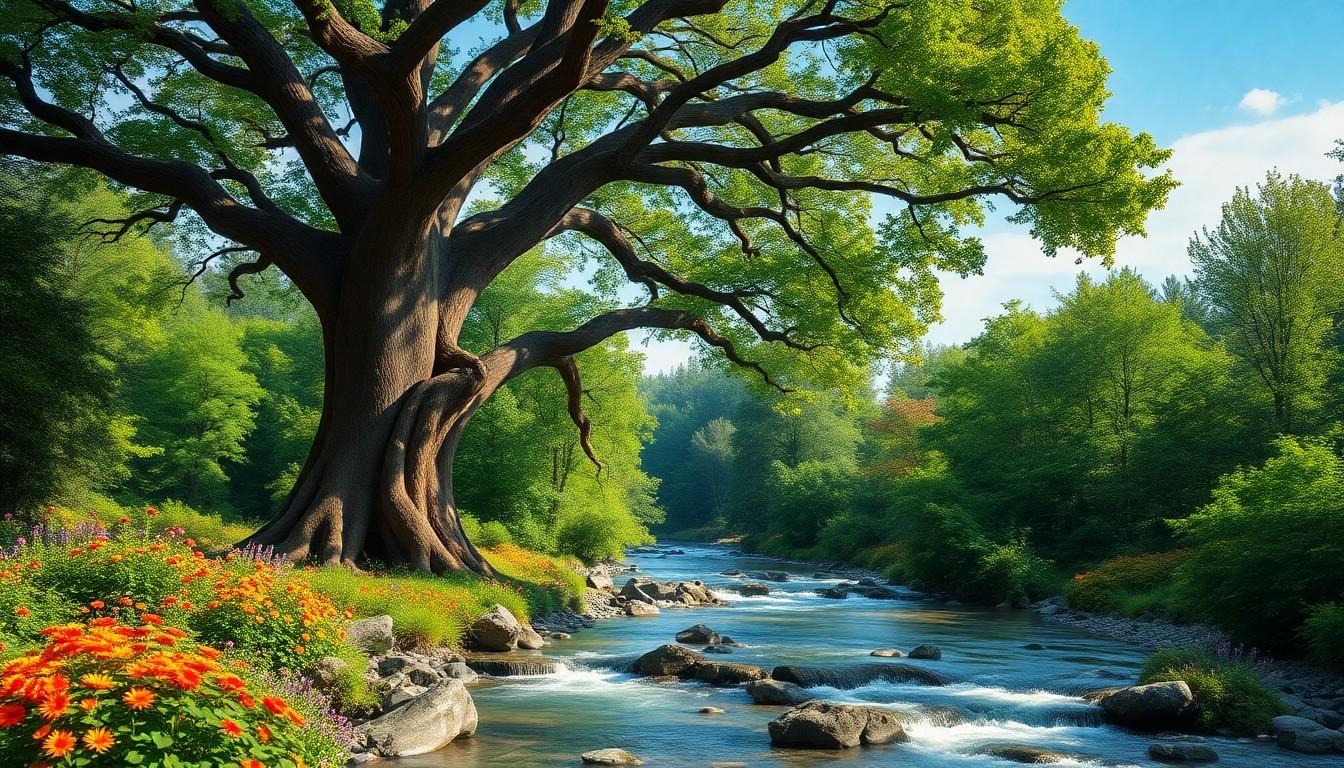Nature’s got a way of whispering secrets that can turn the ordinary into the extraordinary. From the rustling leaves to the vibrant colors of a blooming flower, each element carries a meaning that resonates deeply within us. Ever wondered why a sunset feels like a warm hug or why the sound of rain brings a sense of peace? It’s not just poetic fluff; there’s a whole world of symbolism waiting to be explored.
In a fast-paced life where technology often drowns out the simple joys, tapping into nature’s wisdom can spark creativity and inspire a fresh perspective. Embracing these natural meanings can lead to a more fulfilling life, one that’s grounded in the beauty surrounding us. So, grab your hiking boots and get ready to uncover the profound lessons nature has to offer—because who wouldn’t want to learn from the ultimate teacher?
Nature Inspired Meaning
Nature inspired meaning evokes a profound connection between human emotions and the environment. Elements from nature, such as trees and rivers, symbolize fundamental aspects of life.
Definition and Overview
Nature inspired meaning refers to the interpretations and feelings derived from natural elements. These meanings intertwine with human experiences, yielding insights and reflections. For instance, observing a sturdy oak tree can symbolize strength and endurance. Similarly, the swift flow of a river often represents change and adaptability. By engaging with nature, individuals find inspiration and clarity, enriching their emotional landscapes. Recognizing these meanings enhances mindfulness and deepens connections to the world around.
Historical Context
Throughout history, cultures have revered nature for its significance. Ancient civilizations viewed natural entities as symbols of life, urging respect and reverence. For example, the Greeks associated gods and goddesses with elements of nature, emphasizing their influence on human existence. Indigenous communities maintained strong ties to the land, reflecting the need for harmony between humanity and the environment. Artistic movements also drew inspiration from nature, showcasing its importance in literature and visual arts. This historical context underscores the continuous significance of nature inspired meaning across different societies.
Symbolism in Nature

Nature’s symbolism reflects deep connections between human emotions and the environment. Understanding these symbols reveals insights into personal experiences and beliefs.
Common Natural Elements and Their Meanings
Trees often symbolize strength and stability, providing shade and shelter. Flowers, with their vibrant colors and fragrances, represent beauty and transience. Rivers typically signify change and adaptability, flowing continuously and shaping landscapes. Mountains reflect permanence and challenge, standing tall against time and weather. Animals, such as eagles, can represent freedom and vision, while wolves signify loyalty and teamwork. Each of these elements carries specific meanings that resonate with individuals, offering personal reflections on life and emotion.
Cultural Interpretations of Nature Symbols
Cultural contexts shape interpretations of nature symbols significantly. In many Native American traditions, the eagle embodies spiritual insight and connection to the divine. Chinese culture often regards the lotus flower as a symbol of purity and beauty rising from muddy waters. In ancient Egyptian mythology, the Nile River represented life and rebirth. The Celtic tradition sees oak trees as symbols of wisdom and strength. Different cultures imbue nature with varying meanings, reflecting their histories, beliefs, and values. Such interpretations foster a richer understanding of how people connect with the natural world.
Applications of Nature Inspired Meaning
Nature inspired meanings manifest across various fields, enriching art, literature, design, and architecture with profound symbolism and emotional resonance. Engagement with these interpretations enhances creativity and mindfulness.
In Art and Literature
Artists and writers frequently draw from nature’s rich symbolism. Trees often signify strength in paintings, while flowers represent beauty in poetry. Artists like Claude Monet captured the essence of natural landscapes, inviting viewers to experience tranquility. Writers, such as William Wordsworth, used natural elements to convey deep emotional connections. Nature’s influence in storytelling and visual arts reveals how these elements foster insight and reflection, allowing audiences to forge personal connections with the artwork.
In Design and Architecture
Nature inspired designs create environments that promote well-being and harmony. Architects incorporate elements like natural light and organic materials to evoke feelings of warmth and balance. Biophilic design seeks to integrate natural features into urban spaces, fostering connections to nature even in city settings. Examples such as the Eden Project in the UK demonstrate how these elements enhance sustainability and aesthetic appeal. Nature inspired design appeals to human senses and influences emotional experiences, making spaces more inviting and alive.
The Impact of Nature Inspired Meaning on Well-Being
Nature inspires deep emotional connections, promoting enhanced well-being. Elements like rustling leaves and blooming flowers evoke powerful psychological responses.
Psychological Benefits
Connection to nature boosts mental health. Studies show individuals who spend time outdoors experience reduced stress levels. Exposure to natural settings lowers anxiety and depression symptoms. Engaging with nature inspires positive emotions, promoting feelings of peace and contentment. This connection fosters a sense of belonging and encourages mindfulness. Creating green spaces in urban environments also enhances community well-being. Natural surroundings offer opportunities for reflection, facilitating emotional healing.
Nature Therapy and Its Relevance
Nature therapy garners attention for its therapeutic benefits. This approach highlights the importance of nature in mental health treatment. Practitioners use natural environments to facilitate healing and recovery from emotional challenges. Techniques include guided nature walks, horticultural therapy, and mindfulness exercises in serene settings. Researchers find that nature therapy can lead to improved mood and increased life satisfaction. Clients report feeling revitalized after outdoor experiences, reinforcing a meaningful relationship with the environment. Integrating nature therapy into conventional practices supports holistic approaches to wellness.
Transformative Experience
Embracing nature’s profound meanings enriches the human experience in countless ways. By connecting with the natural world individuals can unlock creativity and foster emotional well-being. This relationship not only enhances mindfulness but also deepens one’s appreciation for the environment.
As people explore the symbolism found in trees, rivers, and flowers they cultivate a greater understanding of their own emotions and the world around them. Nature-inspired meaning serves as a reminder of the wisdom inherent in the environment, encouraging a more fulfilling and harmonious existence. Engaging with these elements can lead to transformative experiences that resonate deeply within.




